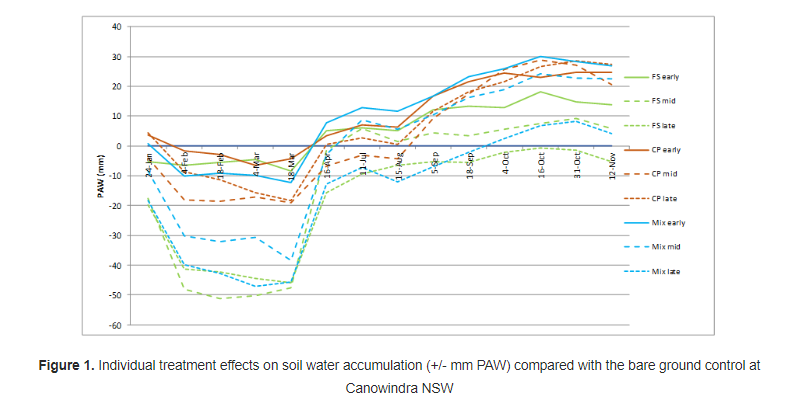Summer Cover Crops in Short Fallow – Do They Have a Place in Central NSW?
Mixed farming enterprises have good reason to capitalise on the increased biomass of a summer cover crop given the current prices for red meat. According to these results, the grazing value would more than compensate for the winter crop grain yield penalty. Nutrients such as nitrogen would need to be adequate to support such a high output system, however the additional income from the livestock enterprise would compensate for the additional nutritional expenses.
The benefits of cover crops to protect the soil from wind or water erosion in low stubble scenarios is well understood, however the use of cover crops as a technique to improve water infiltration and storage to improve grain yield for the following winter cash crop is less clear.
The take home messages from this GRDC-funded research are below. Please access the full paper via the link below for methodology, references, acknowledgements and discussion.
Key take-aways include:
- Summer cover crops reduced the winter cash crop (wheat) grain yield by up to 1.5 t/ha at Canowindra and 0.6 t/ha at Parkes
- Grain yield losses were minimized by spraying out the cover crop early
- The grazing value ($/ha) generated from the cover crop more than compensated for the grain yield reduction based on current commodity prices
- Pros of summer cover crops include increased ground cover, reduced soil erosion from wind and water, cooler and more consistent soil temperatures, improved autumn sowing conditions, valuable summer forage for mixed farming operations, quicker soil water recharge compared with bare ground, reduced herbicide applications over the summer fallow, and improved total soil carbon % and assumed microbial activity
- Cons of summer cover crops include reduced mineral nitrogen and reduced grain yield for the following winter cash crop, increased risk of soil water deficit in low rainfall years (or greater reliance on in-crop rainfall), additional seed costs, patchy establishment of summer cover crop due to rapidly drying Soil Management, high herbicide rate required to terminate cover crop, and increased disease risk (stubble and soil) due to green bridge for the following winter cash crop
- Risks associated with cover crops are reduced by: longer fallow period post cover crop for soil moisture recharge and mineralisation of cover residue; incorporating livestock within the system to convert surplus biomass to $/ha; seasons with high rainfall; additional nitrogen fertilizer application for winter cash crop
- The optimum ˜crop type selection’ and ˜spray out timing’ will vary depending on individual paddock and enterprise goals.
